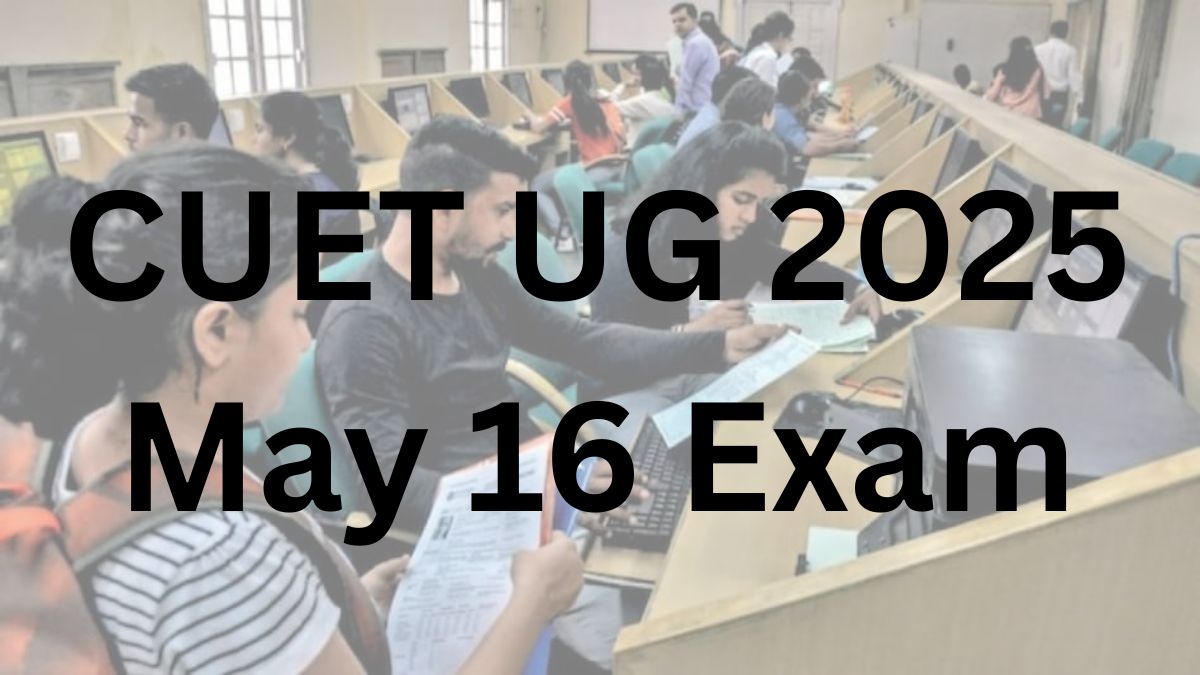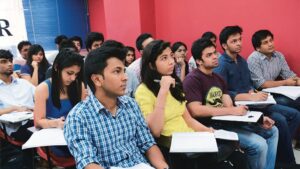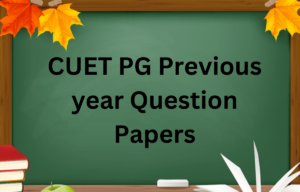The Common University Entrance Test, Undergraduate (CUET UG) is being conducted by the National Testing Agency at various exam centers. All the students who have completed their 12th class or equivalent level of education and are aspiring to get admission into a bachelor’s level course at any top-rated university in India need to appear and qualify for the CUET UG Exam 2025. The NTA is conducting the CUET 2025 Exam between May 13 to June 03, 2025. Today, on May 16, 2025, the examination body conducted examinations for various important subjects like Accountancy, Business Studies, and Economics. Scroll down in the article for the subject-wise exam analysis and the memory-based questions from the May 16, 2025 CUET Exam.
CUET UG May 16 Exam Analysis
The table below shares the subject wise exam analysis of the CUET May 16 Exam 2025. Check the table:
| CUET UG May 16 Exam Analysis | |
| CUET Subject | Good Attempts |
| English | 40-45 |
| General Test | 38-42 |
| Economics | 40-45 |
| Accountancy | 38-42 |
| Physics | 35-40 |
| Chemistry | 40-45 |
| Political Science | 45-40 |
CUET UG May 13 – May 16 Exam Difficulty Levels
The table below shares the subject-wise exam difficulty levels of all the examinations conducted by the NTA for CUET UG 2025. Check the table:
| CUET UG May 13 – May 16 Exam Difficulty Levels | |
| CUET UG Subject | Difficulty Level |
| English |
Easy to Moderate
|
| Economics |
Easy to Moderate
|
| Accountancy | Moderate |
| Business Studies |
Easy to Moderate
|
| General Test | Moderate |
| Political Science |
Easy to Moderate
|
| Physics |
Easy to Moderate
|
| Chemistry | Moderate |
| Biology |
Easy to Moderate
|
CUET UG 2025 May 16 Accountancy Memory-Based Questions
Direction for Question 1 to 5: Answer the given questions as per information given below.
Xylo Ltd. was formed on 1st April, 2018, with an authorized capital of ₹12,00,000 divided into equity shares of ₹10 each.
It invited applications for 30,000 shares to be issued at par, in the year of its formation, all of which were subscribed for and the amount due on them fully received.
On 1st April, 2020, the company issued another 60,000 shares at a premium of ₹2 per share to be received with allotment. It received applications for 55,000 shares which were duly allotted.
All amounts due on the allotted shares was received except the final call of ₹2 per share on 1,000 shares. The company forfeited these shares and later reissued 800 of the forfeited shares @ ₹7 per share fully called up.
The Balance Sheet of the company was prepared as at 31st March, 2021, as per Schedule III of the Company Act, 2013.
Q1. The issued capital of the company to be shown in Notes to Accounts as at 31st March, 2021, under “Share Capital” will be:
(a) ₹12,00,000
(b) ₹9,00,000
(c) ₹8,50,000
(d) ₹8,49,600
S1. Ans. (b)
Sol. Issued Capital = 90,000 × 10 = ₹9,00,000
Q2. The subscribed shares of the company at the end of the year 2020-21 will be:
(a) 1,20,000
(b) 90,000
(c) 85,000
(d) 84,800
S2. Ans. (d)
Sol. Subscribed shares of the company at the end year = 85,000 – 1,000 + 800 = ₹84,800
Q3. The amount of Share Capital to be shown in the Balance Sheet of the company as at 31st March, 2021, will be:
(a) ₹12,00,000
(b) ₹9,00,000
(c) ₹8,50,000
(d) ₹8,49,600
S3. Ans. (d)
Sol. Subscribed and fully paid up
- 84,800 shares of ₹10 each fully paid up – 8,48,000
- Add: Share Forfeiture Account – 1,600
(₹8 per share received on 200 unissued shares) - Total – 8,49,600
Q4. The net gain made by the company on reissue of the 800 shares will be transferred to:
(a) Reserve Capital Account
(b) Capital Reserve Account
(c) Securities Premium Reserve Account
(d) Statement of Profit and Loss
S4. Ans. (b)
Sol. The net gain made by the company on reissue of the 800 shares will be transferred to Capital Reserve Account.
Q5. Share Forfeiture A/c will be credited by:
(a) ₹8,000
(b) ₹2,000
(c) ₹10,000
(d) None of the above
S5. Ans. (a)
Sol. Share Forfeiture A/c will be credited by = 1,000 × 8 = ₹8,000.
CUET UG 2025 May 16 Business Studies Memory-Based Questions
Direction (Q1-Q5): Based on following case study, answer question.
Eco-Fresh Foods is a new entrant in the ready-to-eat meal market, focusing on organic, locally sourced ingredients. They’ve developed a unique line of vegan and gluten-free microwaveable meals designed for busy, health-conscious consumers. The meals are packaged in innovative, compostable trays with clear nutritional information and vibrant branding emphasizing freshness and natural goodness. Eco-Fresh decided to price their meals slightly below established organic competitors but significantly above conventional ready-to-eat options, aiming to quickly penetrate the market and attract a substantial customer base looking for value in the premium segment. Distribution is planned through select organic grocery stores, independent health food shops, and a subscription box service delivered directly to consumers’ homes, managed from strategically located regional fulfillment centers. To build awareness and drive initial sales, Eco-Fresh launched digital advertisements targeting health and wellness enthusiasts, offered a “buy one, get one free” promotion for the first month in retail stores, and sent product samples to popular food bloggers for review. They also hired a small sales team to visit grocery stores and health food shops to ensure prominent placement and educate store managers about the product benefits and target audience.
Q1. The case states that Eco-Fresh decided on a pricing approach with the aim of “quickly penetrate the market and attract a substantial customer base”. Based on marketing principles, which pricing objective does this strategy most closely align with?
(a) Achieving Product Quality Leadership
(b) Maximising Short-run Profits
(c) Obtaining Market Share Leadership
(d) Surviving in a Competitive Market
S1. Ans. (c)
Sol. Obtaining Market Share Leadership is a pricing objective where a firm aims to capture a large portion of the market, often by setting prices that are competitive or slightly lower than direct competitors to attract more customers and increase sales volume. Eco-Fresh’s goal of “quickly penetrate the market and attract a substantial customer base” directly reflects the objective of gaining significant market share, which is often pursued through strategic pricing relative to competitors.
Q2. The description of Eco-Fresh’s meals as “organic, locally sourced, vegan and gluten-free” and their packaging in “innovative, compostable trays with clear nutritional information and vibrant branding” primarily relates to which element of the marketing mix?
(a) Price
(b) Place
(c) Product
(d) Promotion
S2. Ans. (c)
Sol. The Product element of the marketing mix encompasses the actual goods or services offered, including their features, quality, design, packaging, and branding. The description of the meal’s composition (organic, vegan, etc.), the packaging type (compostable trays), nutritional information, and branding all relate directly to the attributes and presentation of the product itself.
Q3. Eco-Fresh’s plan to make their meals available “through select organic grocery stores, independent health food shops, and a subscription box service delivered directly to consumers’ homes, managed from strategically located regional fulfillment centers” describes activities related to which element of the marketing mix?
(a) Product
(b) Price
(c) Place
(d) Promotion
S3. Ans. (c)
Sol. Place (or Physical Distribution) involves activities related to making the product available to the target customers. This includes selecting distribution channels or intermediaries (organic grocery stores, health food shops, subscription service) and managing the logistics of getting the product to those locations or directly to the consumer, which involves warehousing or fulfillment centers.
Q4. The case mentions that Eco-Fresh offered a “buy one, get one free” promotion for the first month in retail stores and sent product samples to popular food bloggers. These actions are examples of which tool from the promotion mix?
(a) Advertising
(b) Personal Selling
(c) Sales Promotion
(d) Publicity
S4. Ans. (c)
Sol. Sales Promotion refers to short-term incentives designed to encourage immediate purchase or trial of a product. Examples include discounts, offers like “buy one, get one free,” and the distribution of free samples. Both the “buy one, get one free” offer and providing samples fall under the category of sales promotion techniques.
Q5. Eco-Fresh hired a small sales team to visit grocery stores and health food shops to ensure prominent placement and educate store managers about the product benefits and target audience. This activity is an example of which tool from the promotion mix?
(a) Advertising
(b) Personal Selling
(c) Sales Promotion
(d) Publicity
S5. Ans. (b)
Sol. Personal Selling involves direct interaction between a salesperson and potential buyers (in this case, the store managers acting as intermediaries) for the purpose of making a sale or securing distribution. The activity of sales representatives visiting stores, negotiating for shelf space, and educating staff is a clear example of personal selling efforts.
CUET UG 2025 May 16 Economics Memory-Based Questions
Q1. Arrange the following steps in the correct sequence when RBI sells government bonds in the open market:
(A) The money supply in the economy decreases.
(B) Banks have fewer reserves available for lending.
(C) Private individuals or institutions buy the bond from RBI.
(D) The payment made to RBI reduces reserves in the banking system.
Choose the correct answer from the options given below:
(a) (C), (D), (B), (A)
(b) (D), (C), (A), (B)
(c) (C), (B), (D), (A)
(d) (A), (C), (D), (B)
S1. Ans.(a)
Sol.
(C) First, RBI sells a government bond to private individuals or institutions.
(D) The buyers pay for the bond, reducing the reserves in the banking system.
(B) Banks now have fewer reserves available for lending.
(A) This results in a decrease in the money supply in the economy.
Q2. Which of the following would be classified as a revenue expenditure of the government?
(a) Investment in the construction of a new highway.
(b) Purchase of land for building a school.
(c) Salaries paid to government employees.
(d) Loans granted by the government to public sector undertakings.
S2. Ans. (c)
Sol. Revenue expenditure is expenditure incurred for the normal functioning of the government departments and various services. It is recurring in nature and does not result in the creation of any physical or financial asset. Salaries paid to government employees are a regular operational expense. The other options represent capital expenditure as they either create an asset (highway, land) or reduce a liability/create a financial asset (loans).
Q3. A bank receives reserves of ₹100. If the CRR is 20%, what is the maximum total deposit that can be created in the system?
(a) ₹400
(b) ₹100
(c) ₹500
(d) ₹200
S3. Ans. (c)
Sol. With a CRR of 20%, money multiplier = 5. So, ₹100 × 5 = ₹500 worth of deposits can be created.
Q4. What happens if input prices increase?
(a) The supply curve shifts to the right
(b) The supply curve shifts to the left
(c) The demand curve shifts to the right
(d) The equilibrium price falls
S4. Ans. (b)
Sol. An increase in input prices raises production costs, shifting the supply curve to the left (decreasing supply).
Q5. A consumer experiences the following total utility from consuming a certain good:
| Quantity | 1 | 2 | 3 | 4 | 5 |
| Total Utility | 25 | 45 | 60 | 70 | 75 |
If the price per unit is ₹4, at what quantity does the consumer stop purchasing under the equilibrium condition where MUm = 5?
(a) 2 units
(b) 3 units
(c) 4 units
(d) 5 units
S5. Ans. (c)
Sol.
First, we calculate marginal utility (MU):
| Quantity | 1 | 2 | 3 | 4 | 5 |
| Total Utility | 25 | 45 | 60 | 70 | 75 |
| Marginal Utility (MU) | 25 | 20 | 15 | 10 | 5 |
Now, MUm = 5:
P = ₹4
MU/P = MUm = 20/4 = 5
After 2 unit where MU is 20 utils and price is ₹5 consumer stop purchasing under the equilibrium condition.



 Best CUET Coaching in Delhi - Factors De...
Best CUET Coaching in Delhi - Factors De...
 Best CUET Coaching in Noida - Get Top 5 ...
Best CUET Coaching in Noida - Get Top 5 ...
 CUET PG Previous Year Question Papers wi...
CUET PG Previous Year Question Papers wi...







